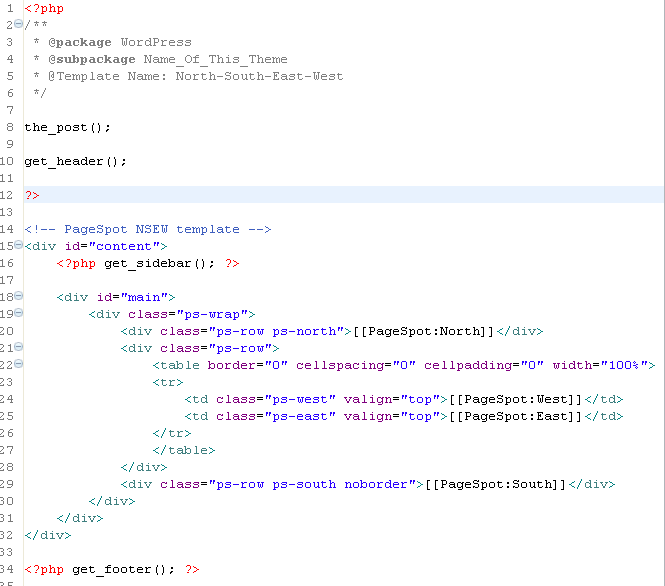PageSpot facilitates more complex layout options for Pages, and dynamically
assignable sidebar content on a per-Page basis.
| Author: | Nick Eby (profile at wordpress.org) |
| WordPress version required: | 2.7 |
| WordPress version tested: | 2.7 |
| Plugin version: | 0.1.4 |
| Added to WordPress repository: | 19-06-2009 |
| Last updated: | 20-06-2009
Warning! This plugin has not been updated in over 2 years. It may no longer be maintained or supported and may have compatibility issues when used with more recent versions of WordPress.
|
| Rating, %: | 0 |
| Rated by: | 0 |
| Plugin URI: | http://pixelnix.com |
| Total downloads: | 3 043 |
| Active installs: | 10+ |
 Click to start download |
|
PageSpot uses private Pages as groups of content to be inserted in various other places in your Page or theme. By default it creates two special private Pages:
PageSpot Snippets are pieces of another Page. To create a new snippet, just create a child Page of the [PageSpot] Page Snippets page. PageSpot will ensure your new snippet remains Private and inaccessible on its own. PageSpot then expects you to assign the snippet to a Spot on one of your public Pages.
To do that, you will first need to create custom templates in your theme directory. If you create a template with "pagespot" in the name, and select it in the Page editor, the PageSpot admin box will become active for that Page. PageSpot will parse the template for annotations that look like "[[PageSpot:Foo]]", and allow you to assign a PageSpot Snippet to the "Foo" spot.
The final result is that when viewed from the front end, your Page will have the assigned snippet Page's content inserted in place of your [[PageSpot]] annotation. This lets you build up complex layouts for a Page, composed of other Pages. content which you can edit and replace independent of each other.
Sidebar Items are pages that together comprise a sidebar for your theme. To create a sidebar, just create a private Page named "[Sidebar] Foo". All child pages of that page constitute the Foo sidebar. PageSpot will add a meta-box in the Page Edit screen to select the sidebar to use for the current Page. Adding some simple PHP code to your sidebar template is all you then need to bring this functionality into your custom theme:
<?php PageSpot::print_sidebar(); ?>
Screenshots




![Creating selectable Sidebars by adding child pages to private "[Sidebar] Foo" pages](https://ps.w.org/pagespot/trunk/screenshot-4.png?rev=1539327)
